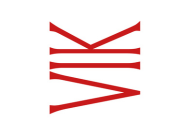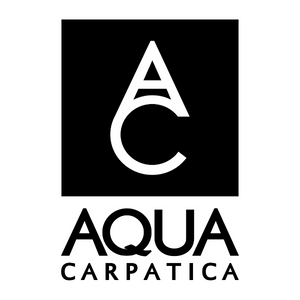How to strike out on your own
1 Build your reputation
Luca Currado Vietti and his wife Elena Penna, formerly the heart and soul of Vietti winery, one of the most successful estates in the Barolo zone, recently announced their new project to produce Barolo, Barbera, Dolcetto and a few other wines from their new home in a small farmhouse in Serralunga d’Alba, in the heart of the Barolo zone.The couple departed Vietti winery in Castiglione Falletto in January 2023; at that time Luca was CEO of Vietti, along with his role as head of winemaking for 35 years, while Penna oversaw commercial operations as sales director.
“We didn’t have any plans to leave Vietti,” Penna proclaims. “Nor did we have plans to start a new winery, but then things went a different way. Since then we started to figure out our new family project. It wasn’t something easy.”
Currado and Penna will release their 2023 wines to the marketplace this September; while they did produce a few thousand bottles of wine from the 2022 vintage, the 2023s mark the official debut of the Cascina Penna-Currado brand.
“It has been very exciting, and we were very happy to arrive at the 2023 harvest,” Penna remarks.
2 Find a good location for your base
About their new home, Penna explains that this structure – one of the three historical farmhouses of the region – was built in 1554, and was given to the church, which briefly used it as a hospital. “It then became part of Opera Pia, a charity organisation of the church that was collecting vineyards from local families in Serralunga. So the Opera Pia was vinifying grapes that came from the vineyards.”The church eventually sold the farmhouse at the end of the 1800s to two families that were making wine for them; Penna and Currado purchased it in 2018. “We had been looking to purchase this farmhouse for a very long time. So, let’s say there was not a better place for us to start our new family adventure.”
3 Source fruit from great vineyards
The couple is producing Barbera, Dolcetto, Langhe Nebbiolo and Barolo, as well as a Timorasso, a white from the Colli Tortonesi area in Alessandria province. They are sourcing Barbera, Dolcetto and Nebbiolo for their Langhe Nebbiolo from San Sebastiano, a frazione (suburb) of Monforte d’Alba. The couple are excited about sourcing fruit from this site, which used to be part of the Barolo zone in the early 1970s.They are working with 13 hectares (32 acres) of vineyards and have long-term contracts of 25 years and longer with local growers. Penna notes that along with the vineyards, there are woods and even a lake, which is the only one in the Barolo area. “This is important if you are looking to the future for water reserve.”
4 Create an exiting range of wines
Penna explains that temperatures at San Sebastiano, although warm, are cooler than many nearby areas, as the vineyards face the mountains, from which they receive fresh air. “Barbera coming from San Sebastiano has a lot of fragrance, a lot of freshness, body, structure, and are juicy but with the proper acidity.”For Dolcetto, the Penna-Currado version represents a classic style, with whole cluster vinification, aged only in steel. “We never had the idea to make a Dolcetto like Barolo in our lives,” says Penna. “Dolcetto needs to be a pure and easy-drinking wine.”
Interestingly, they will produce a Langhe Nebbiolo and a Nebbiolo d’Alba. Why both? “Langhe Nebbiolo will represent the largest production,” Currado remarks, “but we will also make a Nebbiolo d’Alba, as this is a very old denomination that has been almost completely forgotten because Langhe Nebbiolo has become so big.”
Also, as the production zone for Nebbiolo d’Alba is much smaller than that of Langhe Nebbiolo, Currado is excited about making this wine; he notes a few versions from local estates that he greatly enjoys. “You will see in the future more producers making this distinction as well. We think Nebbiolo d’Alba will be more and more important.”
For their initial releases of Barolo from the 2023 vintage, to be released in 2027, Penna and Currado have made a classic Barolo, a blend of fruit from several MGAs, as well as two single-vineyard offerings.

For the classic offering, they have sourced fruit from San Lorenzo in Verduno, “which gives this spiciness, elegance and fragrance”, in Currado’s words, along with source material from two parcels in the Perno MGA in Monforte d’Alba, and finally another parcel in between Monforte and Barolo named San Giovanni. “This part is very delicate,” Currado states. “It’s somewhere in the middle for Barolo personality.”
While they will not yet reveal the MGAs for their single vineyard examples of Barolo, a lot of thought went into the selection process. “I can tell you that our two MGA Barolos are two of the best five MGA in all of the Barolo zone,” Penna declares.
5 Create opportunities for the whole family

The couple’s children, Michele and Giulia, both in their 20s, will be an important part of the project. Penna asked both of them what they thought of the idea of starting a new family business; Michele answered that he would not have been interested if they were still at Vietti, but was interested to help start this new journey, while Giulia, who has had wine experience in Europe and America, was ready to sign on, once she had completed her studies at the university.
Penna is thrilled that both of them have chosen to work alongside their parents. “I see a lot of young kids in Piemonte and other parts of Italy who study wine, sometimes because they were obliged by the family, and they end up doing their job without a lot of passion. For us, it was important for us to let our kids free to decide in terms of their studies and experience, and I think it was good because at the end they came back.”
Given this love of family as well as respect for their heritage, you’d have to bet that Cascina Penna-Currado will be a notable success for years to come.
This article by Tom Hyland first appeared on the Wine-Searcher website.

 English
English French
French



.png)


.png)





